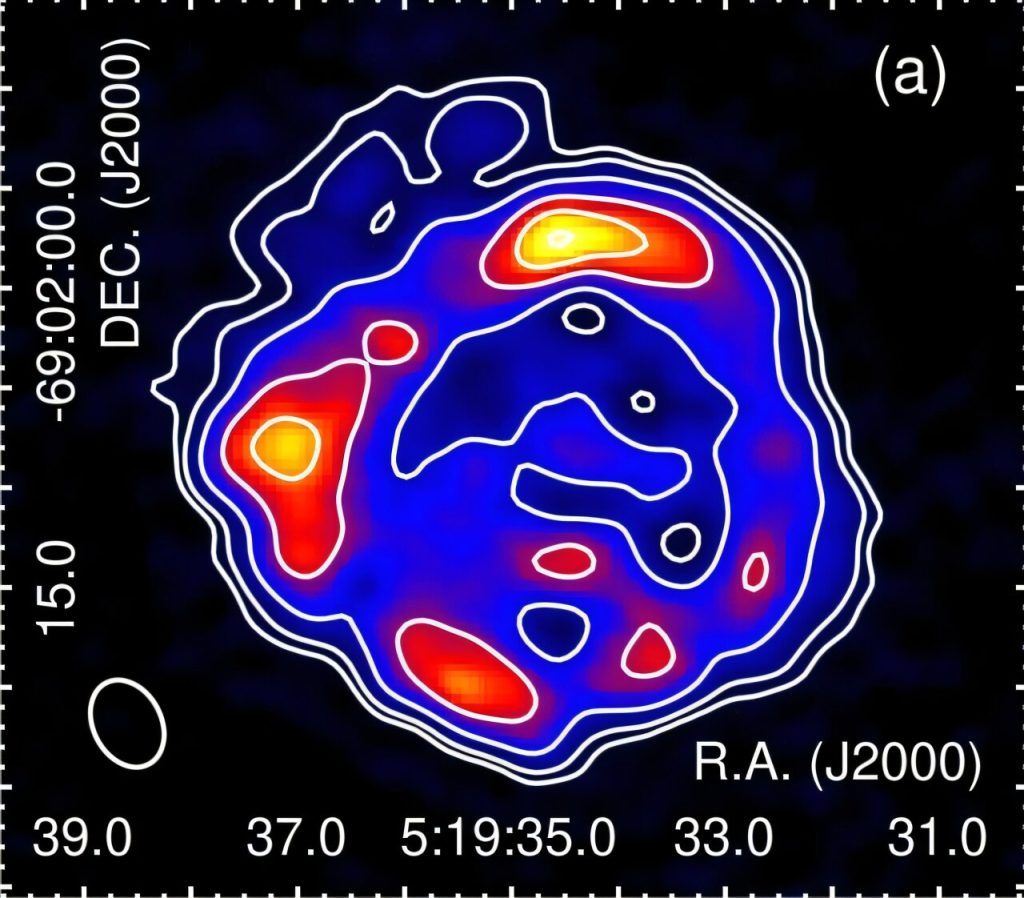Hey there! A group of astronomers recently took a closer look at a supernova remnant called MC SNR J0519-6902 in the Large Magellanic Cloud (LMC) using telescopes in Australia. Supernova remnants are structures that form after a massive star explodes. They are filled with material that was ejected during the explosion and other stuff in space that gets caught up in the shockwave.
MC SNR J0519-6902 was first spotted in 1981 and is about 26 light years wide, showing a ring-like shape with three bright spots. Scientists have been studying this remnant for a while, but there’s still a lot to learn. For example, estimates of its age vary from 450 to 1,500 years, and the size of the star that exploded ranges from 1.2 to 4.0 times the mass of our Sun.
To get a better handle on MC SNR J0519-6902, Rami Z. E. Alsaberi and the team used telescopes along with data from the Hubble Space Telescope and the Chandra X-ray observatory.
Their observations revealed that this supernova remnant has an average polarization of 5 to 6 percent at different frequencies, similar to younger remnants in our galaxy and others. They also found that its magnetic field strength falls within the range seen in younger remnants.
Based on these new findings, the scientists think that MC SNR J0519-6902 is a relatively young remnant that might be transitioning out of its initial expansion phase. Exciting stuff, right?
If you want to dive deeper into the details, you can check out the full study published in the preprint server arXiv. And remember, this research is part of the ongoing quest to understand the amazing celestial phenomena in our universe.


